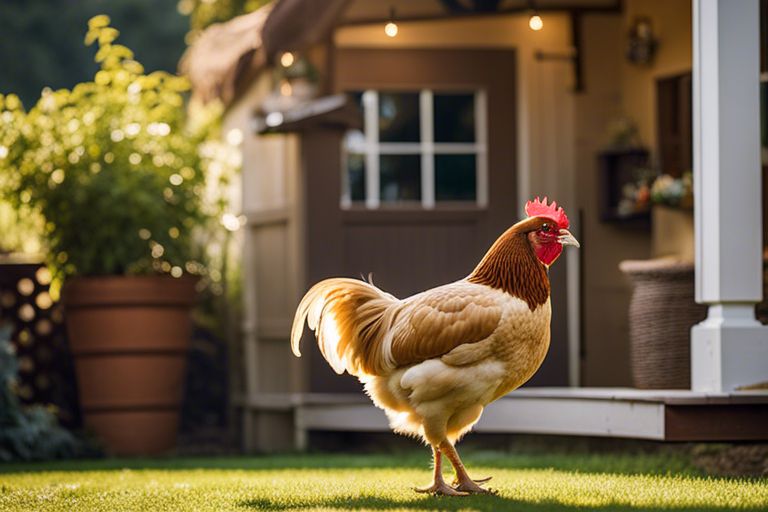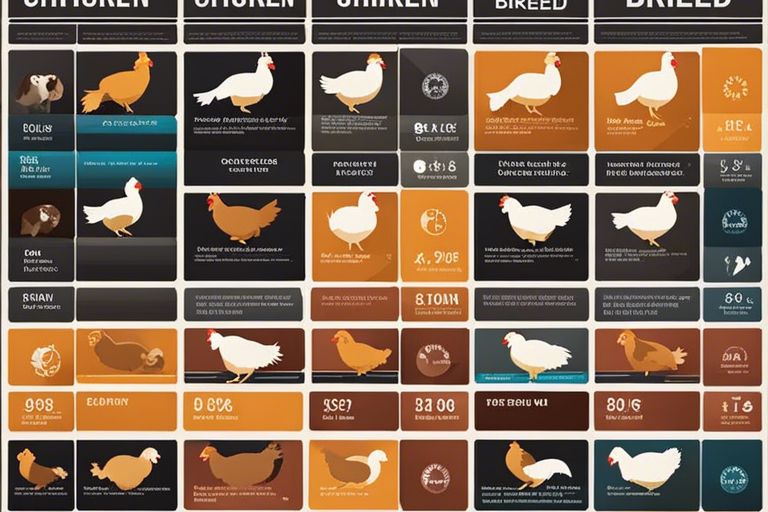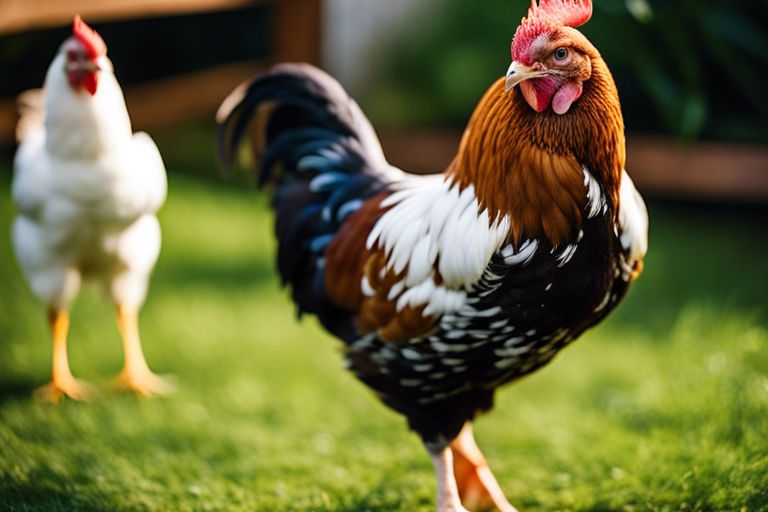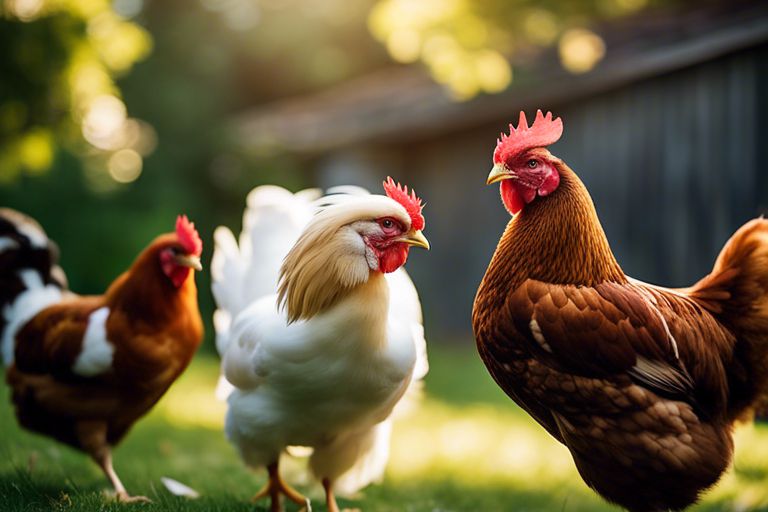Bantam chickens may be smaller in size compared to their standard counterparts, but they bring their own unique characteristics to the table. These differences go beyond mere physical appearance, influencing behavior, egg production, and overall care requirements. Understanding the distinctions between bantam and standard chicken breeds is crucial for poultry enthusiasts looking to create the perfect backyard flock or raise chickens for specific purposes. Let’s investigate into the key variances between these two types of chickens to gain a deeper appreciation for the diversity within the world of poultry.
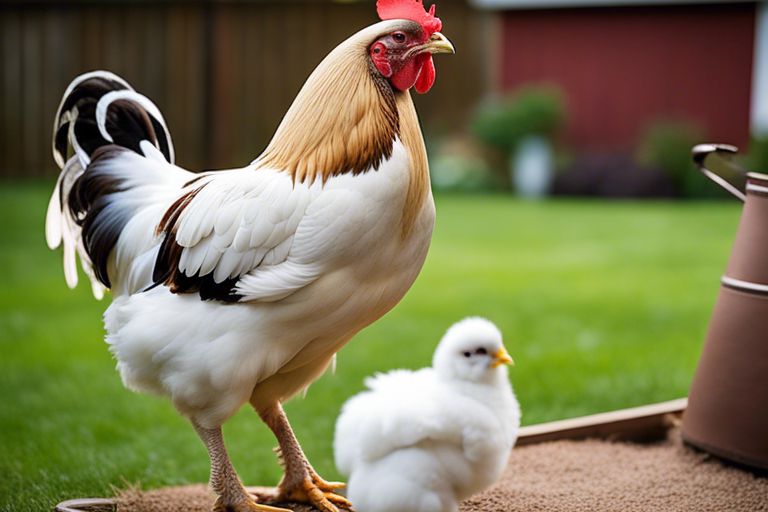
Characteristics of Bantam Chickens
Size and Appearance
On average, Bantam chickens are small in size compared to Standard breeds. They are known for their compact bodies, with some varieties having feathered feet and decorative plumage. Despite their small size, these chickens are full of personality and charm.
Temperament and Behaviour
For Bantam chickens, their temperament and behavior are just as diverse as their appearance. These birds are often friendly, curious, and more likely to be tamer than their larger counterparts. They can be quite social and enjoy human interaction, making them popular choices for backyard flocks.
Their small size and gentle nature make them great pets for families with children or individuals looking for feathered companions that are easy to handle and care for. Bantams are known for their docile demeanor, making them a joy to have around the coop.
Egg Production and Broodiness
Temperament and behavior are not the only defining characteristics of Bantam chickens. In the matter of egg production, these chickens may not lay as many eggs as Standard breeds, but they make up for it with their broodiness. Bantam hens are known to be excellent mothers, with a strong instinct for hatching and caring for chicks.
This unique trait makes them ideal for those interested in natural breeding or looking to expand their flock through hatching eggs. While they may not lay as frequently as other breeds, the maternal instincts of Bantam hens make them valuable additions to any poultry enthusiast’s collection.
Characteristics of Standard Chicken Breeds
Size and Appearance
Any standard chicken breed is known for its larger size compared to bantam breeds. These chickens exhibit a more robust and well-developed appearance, often showcasing vibrant plumage and a proud stance that emphasizes their size.
Temperament and Behaviour
Appearance may vary greatly among standard chicken breeds, but they commonly share friendly and docile temperaments. These breeds are typically calm and easy to handle, making them ideal for backyard chicken keepers looking for a pet-like companion in addition to egg-layers.
Characteristics of Standard Chicken Breeds can also include a wide range of behaviors such as socializing with other chickens, roosting in elevated spaces, and exhibiting a natural curiosity for scratching and pecking at the ground in search of food.
Egg Production and Meat Yield
On average, standard chicken breeds are known for their higher egg production and meat yield compared to bantam breeds. These chickens are often raised for dual purposes, providing a reliable source of both eggs and meat for households and farms.
It is necessary to consider the specific breed’s egg-laying capabilities and meat quality when selecting a standard chicken breed for your flock, as some breeds excel in egg production while others are prized for their meat yield.
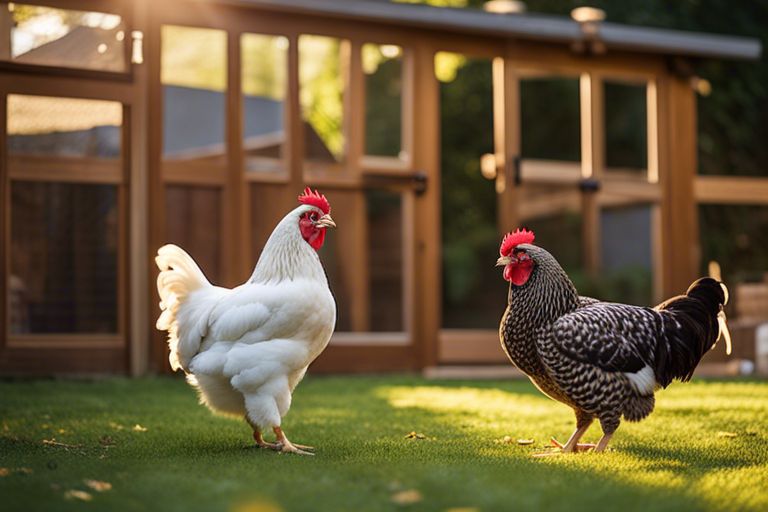
Comparative Analysis
| Space Requirements | Diet and Nutrition |
| With Bantam breeds, their smaller size means they require less space compared to Standard breeds. A smaller coop or run may be sufficient for Bantams, while Standard breeds need more room to roam and stretch their wings. | Any differences in diet between Bantam and Standard breeds are minimal. Both types of chickens require a balanced diet of poultry feed, supplemented with grains, fruits, and vegetables to ensure optimal health and egg production. |
Suitability for Different Environments
To determine the suitability of Bantam or Standard breeds for different environments, factors like climate, predator risk, and available space must be considered. One breed may thrive better in a cold climate with protection from predators, while the other may be more suited for free-ranging in a warmer climate.
More about Diet and Nutrition
To meet the nutritional requirements of your chickens, consider factors like protein content, calcium levels, and availability of fresh water. Additionally, monitor their food intake to prevent obesity or deficiencies that could impact their overall health and egg production.
Different Considerations
When opting for between Bantam and Standard breeds, evaluate your specific needs and goals. Whether you prioritize space efficiency, maximum egg production, or ornamental appeal, understanding the differences between these breeds will help you make an informed decision for your chicken flock.
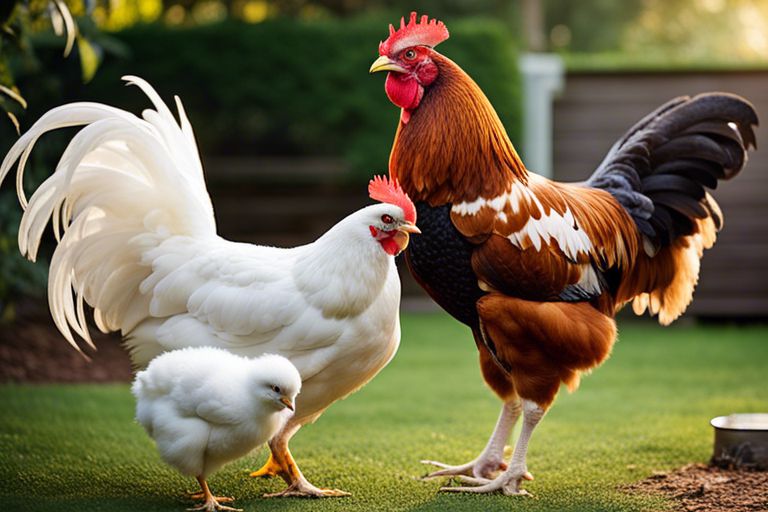
Rearing and Management Considerations
Housing Needs
Many considerations must be taken into account when it comes to the housing needs of bantam and standard chicken breeds. To ensure the well-being and productivity of your flock, providing adequate shelter from the elements, proper ventilation, and ample space for roosting and nesting is necessary. It is important to also consider the size of the birds when designing the coop and ensuring they have enough room to move around comfortably.
Health and Disease Resistance
Resistance to common poultry diseases is a crucial factor to consider when choosing between bantam and standard chicken breeds. Bantam chickens are often more susceptible to diseases due to their small size and delicate nature, while standard breeds tend to have a higher level of disease resistance. Regular health checks, a clean living environment, and proper nutrition are key components in maintaining the overall health and well-being of your flock.
Diseases such as Marek’s disease, infectious bronchitis, and coccidiosis can pose significant threats to the health of your chickens. Implementing a vaccination schedule, practicing good biosecurity measures, and promptly isolating any sick birds can help prevent the spread of disease within your flock. Regular monitoring and working closely with a veterinarian can help ensure the long-term health and vitality of your bantam or standard chicken breeds.
Final Words
The differences between bantam and standard chicken breeds are important to understand for any poultry enthusiast. From size and temperament to egg production and space requirements, each type offers its unique benefits. By knowing these distinctions, poultry keepers can make informed decisions when choosing the right breed for their flock. Whether you prefer the compact size and friendly nature of bantams or the larger egg-laying capabilities of standard breeds, both have their advantages. Remember to consider your available space, desired egg production, and personal preferences when selecting the perfect chickens for your coop. With a solid understanding of these differences, you can confidently raise healthy and happy chickens for years to come.
FAQ
Q: What are the main differences between Bantam and Standard chicken breeds?
A: Bantam chickens are smaller in size compared to Standard breeds. They also have different feather patterns and colors.
Q: Do Bantam chickens require different care compared to Standard breeds?
A: Yes, Bantam chickens require less space and feed compared to Standard breeds. They are also more prone to cold weather due to their small size.
Q: Can Bantam and Standard chickens be housed together?
A: It is possible to house them together, but it’s important to monitor for any aggression or bullying, as the size difference can lead to conflicts.
Q: Are there differences in egg production between Bantam and Standard chicken breeds?
A: Generally, Standard breeds tend to lay larger eggs and more frequently compared to Bantam breeds. However, individual chicken personalities and care can also influence egg production.
Q: Do Bantam and Standard chickens have different temperaments?
A: Bantam chickens are known to be more friendly and docile compared to some of the more aggressive Standard breeds. However, individual personality traits can vary within each breed.
Q: Are there specific health concerns associated with Bantam or Standard chicken breeds?
A: Bantam chickens are more susceptible to predators due to their smaller size, while some Standard breeds may be prone to certain genetic health issues. Proper care and regular health checks are crucial for both types of breeds.
Q: Can Bantam and Standard chickens breed with each other?
A: Yes, Bantam and Standard chickens can interbreed and produce offspring. However, there may be challenges with size differences during mating, and the resulting chicks may exhibit a mix of characteristics from both parent breeds.
